Deciduous trees. Names of trees and their lifespan
In addition to evergreen trees and shrubs, there are also deciduous ones in the garden. In autumn, their foliage turns into a variety of bright colors and then falls off. In winter, they stand without leaves and seem lifeless. Their dull appearance reminds us that according to the calendar it is still winter. At this time of the year, deciduous trees and shrubs are clearly visible among the evergreens.
So, let's get acquainted with those trees and shrubs that shed their foliage for the winter. What interesting things can be seen in them in winter? It would seem, nothing. But it's not. Pay attention to the leafless branches of trees and shrubs. Each type of these plants has special branches. If you look closely at them, you can see that both the stems themselves and the buds located on them differ in many ways. In some plants, the buds are long and sharp (like beech), in others they are blunt and short (like linden). Young branches are also not the same - sometimes they are thin and hairy (like a hazel), and sometimes thick and smooth (like an ash tree), etc. There are special reference guides with which it is easy to find out which branches of a tree or shrub you have in hand.
Some trees have such peculiar branches that the name of the plant is easy to recognize without resorting to the help of botanical reference books. Such, for example, is the white locust (Robinia pseudoacacia) - a tree widespread in the south, which in spring is covered with a mass of white fragrant flowers. This plant is native to North America. In the Batumi region, the white locust was once planted, but now no one specially plants it and no one cares for it. It grows magnificently and gives abundant self-seeding. The tree is so adapted to local conditions that in some places it is introduced into natural forests and grows successfully there.
In winter, the branches of the white acacia can be recognized immediately. They are covered with thin, rather long spines, sitting in pairs. These "twin spines" are lignified stipules. (In summer, you can see that in the gap between them the petiole of a long pinnate leaf is attached.) When you accidentally touch the branches of a white locust, its strong thorns cling to clothing and can injure your hands.
White acacia is an ornamental tree. It is widespread in cities and villages of the steppe and forest-steppe strip of the country; it is often found in street plantings of the cities of the Sea of \u200b\u200bAzov and the Black Sea region. It is also widely used for afforestation of ravines, creating forest belts, etc. The tree is very, unpretentious, drought-resistant. It does not tolerate only sodding and wet soils.
The wood of the white acacia has a dark greenish-brown color, heavy, hard, resists decay well. She finds diverse application. White acacia parquet is stronger and more durable than oak parquet.
White acacia flowers produce a lot of nectar, which gives the bees, especially in the south of Ukraine, a plentiful supply of high-quality honey. The essential oil used in perfumery is extracted from the flowers. Leaves are good fodder.
It is not difficult to recognize another tree in winter - the common locust (Gleditschia triacanthos). She also has spiny shoots on the branches, but they always sit alone. They look much more menacing. These are miniature sharp daggers that are a finger long or more. In addition to the main "blade", such a dagger has several more lateral processes, they are also very sharp and strong. Powerful branched spines - good hallmark honey locust.
Gledichia belongs to the legume family and has feathery leaves characteristic of legumes. In autumn, her beans ripen - very large, flat and curved. However, honey clover flowers are completely different in structure from the flowers of the northern legumes we know, such as peas. They have neither a large upper petal "sail", nor two side "oars", nor a "boat" protruding from the bottom of the flower. All petals are the same shape, and the flowers themselves are small. Their coloration is yellow-green.
Why do honey locusts have such unusual flowers for legumes? The fact is that the legume family is very large, and common feature family is the fruit - bean. In this family, several subfamilies are distinguished, differing in some details of the structure of flowers. Gledichia belongs to one of them (the subfamily of the Caesalpiniaceae), and our northern legumes belong to the other (butterflies). So honey locust and our legumes are not very close relatives. Interestingly, representatives of the subfamily to which Gledichia belongs are almost exclusively tropical and subtropical plants.
Recently, the subfamilies that make up the legumes (moth, caesalpinia, mimosa) are more often considered by botanists as independent families.
Homeland Gledichia - east of North America. In culture, it is common in many countries. It grows very quickly, tolerates some soil salinity, and is drought tolerant. Belongs to the number of honey plants. Very durable wood of honey locust has great resistance against fungi and insects. In the homeland of the plant, it goes to sleepers, poles, etc. Gleditsia is used for prickly hedges, protective strips, strengthening ravines, as an ornamental tree in parks, on the streets. Beans are good fodder for livestock. The seeds are edible, suitable as a substitute for coffee.
The name "Gledichia" is given in honor of the famous German scientist Gledich (1714-1786), professor of botany in Berlin.
But let's go back to the Batumi Botanical Garden. In winter, here you can get acquainted not only with the distinctive features of the branches different trees but also with their leaves. They are also unique to each species. But how can you see the leaves in winter when the trees are bare? There is nothing easier. If in summer you have to look for leaves on the branches, then in winter you have to look for them on the ground. One has only to carefully examine the surface of the soil under the tree, and you will definitely find leaves.
First, let's get acquainted with the original leaves of the liriodendron, or tulip tree (Liriodendron tulipifera), whose homeland is North America. The tulip tree is named because its large flowers resemble tulip flowers in shape and size (although they are not similar in color - their petals are greenish with large orange spot at the base). The leaves of this tree are large and wide, with four large teeth. Unlike the leaves of many plants, they have a notch at the top. The shape of the leaf blade is so peculiar that once you see these leaves, you remember them for a long time.
In addition to leaves on the ground, you can find a lot of some kind of narrow scales resembling the scales of cones. coniferous trees. This is nothing more than individual fruits of a tulip tree. They never open and have small seeds in their thickened lower part. The complex fruit of this plant, which is formed from the "tulip" after it has faded, is a bit like a cone in appearance and consists of many such scales. When ripe, it crumbles (like a cone of a real cedar).
The tulip tree is a relative of the large-flowered magnolia, which has already been discussed (both plants belong to the magnolia family).
At home, in the eastern states of North America, the tulip tree can be very powerful - up to 70 m in height and up to 3.5 m in diameter. In the conditions of Batumi, it grows well. Relatively young specimens, which are no more than 80 years old, look like giants: their trunk is thicker than a meter.
The tulip tree is a supplier of valuable timber. In North America, it is of great forestry importance. Beautiful wood, easily processed and polished, is used for the manufacture of musical instruments, housings - radios, televisions, etc. The color of the wood is yellow, which is why the tree is sometimes called yellow poplar.
Branches, leaves and fruits of deciduous deciduous trees
a - part of a branch of white acacia, b - part of a branch of common locust, c and d - leaf and parts of the fruit of a tulip tree, e - leaf of a "living fossil" - ginkgo
Let's continue our acquaintance with the leaves of trees. In some places of the garden on the ground there are very peculiar bright yellow leaves, similar to a small half-open fan with a long thin handle. Sometimes the "fan" has, as it were, a deep longitudinal recess in the middle, dividing it into two halves. If we found these leaves, it means that somewhere nearby grows a wonderful tree - ginkgo biloba (Ginkgo biloba). It is rightly called a living fossil. The fact is that the genus Ginkgo, where our tree belongs, is one of the oldest among seed plants. It has existed on Earth for about 100 million years. This is irrefutably evidenced by the imprints of leaves found in the strata of ancient rocks. Ginkgo is a remnant (or, as botanists say, a "relic") of very distant geological epochs - the Mesozoic era. It is a contemporary of fossil ancient animals - flying lizards and giant brontosaurs. All close and even more distant relatives of ginkgo have long disappeared from the face of the Earth. And therefore, among the plants that now inhabit our planet, there is not a single one that would look like ginkgo.
Today, the ancient plant is living its life. In the wild, it is no longer found, but only in culture. If not for man, ginkgo, perhaps, would not have survived to our time.
Ginkgo is a very ornamental tree due to its elegant foliage, light green in summer and bright yellow in autumn. It is undemanding to the soil, tolerates smoke and dust well.
How ornamental plant ginkgo is widely cultivated in Asia, Europe, North America. In the USSR, this tree can be found not only along the shores of the Black Sea. It is successfully grown in the southern and southwestern regions of the European part of the country, and in some places even in the Baltic states.
Ginkgo belongs to gymnosperms. However, he never has cones. Large seeds develop right at the ends of special thin twigs. In their size and structure, the seeds are very reminiscent of a plum - yellowish, foul-smelling flesh on the outside, and a large white stone in the middle. Inside the "bone" is the actual seed, everything else is just a shell of the seed. In Japan and China, ginkgo seeds are eaten roasted.
In the Batumi Botanical Garden, some ginkgo specimens produce seeds. In winter, they are easy to find under the trees in large numbers. These seeds have good germination. If you want to grow a "living fossil" in your home, take two or three seeds and sow in flower pot with normal soil. Ginkgo grows well in our room in the north. Don't be scared if late autumn its leaves will turn yellow. The plant did not die. It is simply preparing to shed its leaves, as it does in the south in open ground. Do not forget to water the leafless tree in winter, and then in the spring it will delight you again with its beautiful fan leaves.
And now let's pay attention to unusual leaves another tree lying on the ground. They amaze with their size - 5-10 times more than a palm. Such leaves are obovate magnolia (Magnolia obovata) - one of the deciduous tree species of the Batumi Botanical Garden. In winter, there are many leaves under the magnolia tree. All of them are oval in shape, whitish below.
Try to find the largest one. Such a “leaf” is longer than a portfolio. The leaves of our northern trees are simply pygmies compared to these giants.
In autumn, before leaf fall, obovate magnolia trees are very decorative - their foliage acquires a purple-gray color. Trees are also beautiful in spring, when rather large white flowers bloom on branches among huge leaves. The homeland of the plant is Japan and the Kuril Islands.
But other, seemingly unremarkable leaves lie on the ground. In appearance, they are inconspicuous, brownish, slightly wrinkled, similar to the leaves of an apple tree. But these leaves are quite unusual, they have one amazing property. Take a dry leaf under the tree, put it in the palm of your hand and slap it with the other palm. A fragile sheet, of course, will break into several pieces. Now take the petiole of the broken leaf and lift it up. What a miracle All the fragments of the leaf stretched behind the petiole. The sheet did not crumble, its parts were somehow connected to each other. If you look carefully, you can see that the thinnest threads, similar to cobwebs, play the fastening role.
A tree with such amazing, non-breaking leaves is called elmous eucommia, or gutta-percha tree (Eucommia ulmoides). His homeland is China. The fallen leaves of this plant, or rather, in the veins of the leaf, contain a very elastic substance - gutta-percha. It is the threads of this substance that hold the fragments of the leaf together. Gutta-percha is widely used in industry, medicine and household use. The raw materials for its production are mainly eucommia leaves, which are harvested during leaf fall. Gutta-percha is also found in the bark of roots and stems, and even in fruits.
But, perhaps, enough about the leaves. Let's get acquainted now with the fruits of some deciduous trees and shrubs. Winter is the best time for this. In some plants, the fruits are still hanging on the branches, in others they are already lying on the ground.
Let's stop at a thick tree with an unusual trunk. This trunk is large-spotted from the surface, similar to a dirty steppe, from which grayish-greenish plaster peels off in pieces. The tree is called the oriental plane tree (Platanus orientalis). Some kind of brownish balls the size of Walnut. These "pendants" give the plant a very peculiar look. The balls consist of many small fluffy fruitlets and easily crumble when the fruitlets ripen. The leaves of the plane tree are very similar to the leaves of our northern tree- Norway maple, only larger than them. The sycamore is a valuable ornamental tree common in our south. It is often planted along the streets in cities.
Some resemblance to the plane tree has a resinous liquidambar, or amber tree (Liquidambar styraciflua), originally from North America. It has almost the same palmate leaves and almost the same “balls”, as if suspended from the branches on strings. True, the "balls" are very strong and not only do not crumble on their own, but it is even difficult to break them on purpose. The bark of the liquidambar is not at all the same as that of the plane tree. The trunk of the tree is dark gray monophonic, covered with a network of cracks. It looks like the trunk of our oak tree. In North America, the aromatic resin "ambergris" is extracted from the juice of the liquidambar trunk, which is used in medicine and perfumery. The leaves give off a pleasant smell when crushed. In the North American department of the Batumi Botanical Garden there is a whole grove of large liquidambars. In winter, it is very reminiscent of our oak forest.
We have already said that amazing oaks grow in Japan - evergreen trees with “non-oak” leaves. But in the Land of the Rising Sun there are also deciduous oaks that stand without leaves in winter. Here is one of them - serrated oak (Quercus serrata). Its acorns are unusual - they have the correct spherical shape and look like our hazelnuts. Even more interesting is the cup-shaped cupule that dresses the acorn from below. It is densely covered with fringed scales on the outside and seems shaggy. It's like a miniature fur hat, which just asks for the head of some funny toy man. It is not difficult to find such “papakhas” and acorn balls in winter: they lie in abundance under a tree. Here we will also find the leaves of the plant, which are completely different from the leaves of our Central Russian oak - elongated-oval, without any notches and protrusions. Again you have to be surprised!
Fruits and branches of deciduous deciduous trees and shrubs from East Asia
a - acorn and serrate oak, b - ailanthus fruits, c - poncirus branch with leaf and thorns
Many different fruits can be found on the ground in winter. Here, for example, are peculiar membranous fruits. Imagine a small whitish membrane of a strongly elongated oval shape, in the center of which is a rounded dark swelling (seed). By appearance these fruits are somewhat reminiscent of ash lionfish. Even more, they look like caps for a children's pistol, but not rounded, but in the form of a strongly elongated ellipse. Before us are the fruits of ailanthus, or Chinese ash (Ailanthus altissima). The tree forms many such winged fruits, which the wind carries over a considerable distance. In winter, the fruits hang on the branches in whole bunches, some of them lie on the ground. In the summer of Ailanthus, you can see its peculiar very long pinnate leaves, formed by many pairs of large leaves. Each leaf is so large and long that it can be mistaken for a leafy branch. When rubbed, the leaves emit an unpleasant "mouse" smell.
Ailanthus is cultivated in our country in the Caucasus, in the Crimea, in the south of Central Asia, in the southern and southwestern regions of Ukraine. It is valued mainly as an ornamental tree. It is also used to strengthen the slopes of ravines, talus, sandy and rocky places. Ailanthus is not demanding on the soil, heat-resistant, but photophilous. It grows quickly, although it does not live long (40-50 years). From the roots of the tree, above-ground shoots (the so-called root offspring) can grow, which have great growth strength. In our southern cities, such shoots pierce even asphalt pavements.
Ailanthus is interesting for its geographical distribution: in the wild, it grows only in China. I must say that this country has a very rich flora. There are quite a few plants here that are not found anywhere except China. Among them is ailanthus. The same plant is eucommia, which was mentioned above.
Let's get acquainted with some other deciduous trees, whose homeland is China.
IN middle lane In the European part of the Union, an unremarkable herbaceous plant is found - the knobby boletus. Its flowers are no more than a pea, the same size and fruits-boxes. This plant belongs to the norichnikov family, which in our north is represented only by herbs. In Batumi, a relative of the nocturnus grows, belonging to the same family. But what an amazing relative it is - a huge tree! On its branches in winter you can see large oval fruits-boxes the size of a plum. In their structure, they are exactly the same as those of the norichnik. This tree is called paulownia felt (Paulownia tomentosa).
A tree in the norichnikov family! For northern botanists, this is a real discovery. And there are many such amazing things in the Batumi Botanical Garden. Take, for example, an evergreen shrub that belongs to the umbrella family - shrub bupleurum (Bupleurum fruticosum). The northern representatives of this family, familiar to us, are only herbs (carrots, dill, cumin, etc.). And here - a shrub, and even an evergreen. It can be seen in the Mediterranean section of the Batumi Botanical Garden.
What can not be found in this amazing, unique garden! There are, for example, trees that are relatives of the forget-me-not (belong to the borage family), and trees that are akin to the ornamental herbaceous plant verbena (from the verbena family). There is even a tree related to our plakun-grass (it is from the Loosestrife family). For us, all this is a surprise: after all, in the north only herbs are known in these families.
But back to paulownia. In winter, on its trees, in addition to fruits-boxes, there are also a lot of some small reddish balls. They are collected in clusters on twigs sticking up. Each ball is covered on the outside as if with thin felt. If it is broken or cut lengthwise, you can see inside the large anthers of stamens and pistil. Turns out it's a bud. And its outer shell covered with felt is nothing more than a cup of the future flower. This kind of shell protects the corolla and other internal parts of the flower well in winter. In spring, large bell-shaped pale purple flowers develop from ball-buds. They are very beautiful and have a pleasant strong smell. It is interesting that a prudent tree has already prepared buds since autumn, in which there are all parts of a flower. Spring will come - and paulownia, without wasting time, will bloom.
Exactly the same foresight is shown by some of our northern plants that bloom in early spring, for example hoof. Their buds have been formed since autumn. You can easily see this while walking out of town on one of the sunny October days.
Paulownia wood is very special - very light (almost five times lighter than water) and, moreover, durable. In Japan, boxes, cabinets, etc. are made from it. Paulownia is an ornamental tree. It is very good for parks and alleys. In our country, it is grown in the Caucasus, in the Crimea, in Central Asia.
Worthy of mention is another native of China - the multiple-fruited idesia, or lily-of-the-valley tree (Idesia polycarpa). This is a representative of the Flakurtiev family, unfamiliar to us, which is not found in the flora of the USSR. The lily-of-the-valley tree is named because its flowers smell like lilies of the valley. However, in appearance, the flowers are completely different than those of the lily of the valley - small, greenish, inconspicuous. The tree is very beautiful in winter: it has large hanging clusters of bright red fruit balls. The fruit-bearing tree with its red fruit beads is especially impressive on sunny January days against the background of a bright blue sky. Such trees can be seen in the garden along the main road between the East Asian and North American departments.
In addition to the Flakurtiev family, we meet in the garden with representatives of various other exotic families that are absent in our north and in the USSR in general. Such are the families of lardizabal, simarub, proteus, loganium, monimiev, styrax. When a visiting northern botanist tours the garden and sees these botanical wonders, his surprise simply knows no bounds.
And now - again about the fruits. In winter, interesting fruits are found here and there - black balls the size of a small apple, similar to the cannonballs of an old small cannon. They can be found under trees of a peculiar appearance, which stand without leaves in winter. The thin, straight branches of these trees are arranged in bunches that resemble the spokes of an open umbrella. This is Ford's tung, or oil tree (Aleurites fordii), also a "gift of the East" (its homeland is China). Lifting the fruit from the ground, it is easy to remove a thin shell from it. Below it are several very large seeds. These seeds are rich in valuable, fast-drying oil, which is used to make highly durable varnishes and paints. Interestingly, if you cover the underwater part of the ship with paint prepared with tung oil, shells and algae do not settle on it at all. Because of the oil contained in the seeds, tung is widely cultivated. In the regions of Batumi and in the botanical garden there are whole plantations of this plant.
Tung seeds are a bit like chestnuts or nuts - they are very large and fleshy. But by no means should they be eaten. The seeds are very poisonous.
It is interesting that tung belongs to the euphorbiaceae family, that is, it is a relative of the euphorbias well known to northerners - herbaceous plants with abundant milky juice. Again a familiar phenomenon: northern herbs have tree-like relatives in the south! We have already met this in the family of norichnikovyh, Compositae, etc.
Hovenia, or candy tree (Hovenia dulcis), also belongs to deciduous tree species. The thought suggests itself that “candy” is the fruit of a plant. Oddly enough, this is not the case. Hovenia fruits are small dry balls, completely inedible. But on the other hand, thick juicy stalks, at the ends of which these balls sit, are quite edible. They are sweet and taste very much like raisins, lightly flavored with rum. That's what "candy" is. The stalks are rather long, bizarrely sinuous, brownish in color (and here they resemble raisins), a little thinner than a pencil. Entire bunches of such sweets fall from the tree, and in winter they are easy to find on the ground. In the botanical garden there are not only individual fruit-bearing hovenia trees. There is a whole grove of them here. In winter, there is always a treat for lovers of sweets. Come and collect! Part of the harvest, however, still hangs on the trees, giving them a somewhat unusual look.
A branch of a candy tree with fruits and juicy stalks - “candies” (below, a part of the branch is shown larger)
In summer, howenia looks completely different - she is dressed in beautiful, slightly shiny foliage. It is because of the foliage that this tree is valued in many countries with a fairly warm climate (hovenia is sensitive to frost). However, in South-East Asia, especially in Japan and China, the candy tree is grown for sweet stalks (they contain up to 40% fruit sugar). The stalks are eaten fresh, used in the confectionery industry, alcohol is produced from them, etc. Dried stalks serve as a delicacy, they are sold in small boxes in pressed form. In the homeland of the plant, in China, the stalks serve as a medicine against drunkenness.
The wood of the candy tree is also valued - hard, beautiful, reddish in color. She goes to furniture musical instruments(in China it is called "Japanese mahogany").
The name "hoveniya" was given to the plant in the 18th century. botanist Thunberg in honor of David Hoven, a senator from Amsterdam.
It is interesting to note that Hovenia belongs to the buckthorn family and, therefore, is akin to the “Martian plant” of the collection and our northern buckthorn. How different in appearance these relatives are!
Anyone who wants to watch howenia grows can bring home its seeds and sow them in a pot of earth. Seeds germinate well room conditions. Of these, small candy trees will soon be born. Of course, you won’t be able to get “candy” from such kids.
If the candy tree is almost unfamiliar to northerners, then the same cannot be said about the fig (Ficus carica). Many of us ate its sweet fruits, if not fresh, then at least dried. These are well-known figs, or wine berries. The fig is also a deciduous tree. It is widely cultivated in the Mediterranean countries, and in the USSR - in the Crimea, the Caucasus and Central Asia. Dried figs of Algerian, Greek and Turkish production are often sold in our northern cities and are considered a delicacy. They are very tasty and aromatic.
Figs grow well on the Black Sea coast of the Caucasus, including in the Batumi region. In winter, its trees stand without leaves and attract attention with their unusual thick young branches. Compare figs at least with birch. Her young twigs are very thin, like matches, and in figs they are much thicker than a pencil. This happens only in a few tree species. Young branches of figs are sinuous, slightly knotted and end in a curved sharp bud. Even in winter, fig trees are easy to distinguish from other trees - the branches are so characteristic.
Figs are one of the representatives of ficuses. He is a relative of indoor ficus. But unlike many of its tropical evergreen relatives, the fig is a deciduous and subtropical tree. In spring, large palmate-lobed leaves appear, somewhat resembling enlarged grape or hop leaves. Interestingly, the plant contains milky juice. You pluck a leaf and a whitish watery liquid oozes out of the petiole. The same thing happens when you pluck a leaf. indoor ficus. Its milky juice is also white, but thicker.
Fig seeds are spread by birds - those that peck out the sweet pulp from the figs hanging on the trees. Passing through the digestive tract of birds, the seeds do not lose their germination. Birds bring these seeds everywhere, and therefore young trees are sometimes seen in the most unexpected places.
Figs - amazing unpretentious plant. It can grow on rocks, stone walls and fences. Just like our unpretentious birch, which you sometimes see on the cornices of old brick houses and in other places, it would seem, completely unsuitable for trees. Figs are not at all afraid of the close proximity of the sea. It grows well on steep coastal slopes, where the salt spray of the waves falls in abundance. The plant is propagated by cuttings, which root very easily.
Homeland figs - Central and Asia Minor. This is a heat-loving plant of dry subtropics. It requires a lot of heat in summer, but at the same time it is not very afraid of frost in winter (it can withstand temperatures down to -18 °).
Let's get acquainted now with the East Asian soap tree (Sapindus mukorossi). Its botanical name is "sapindus", which means "Indian soap" in Latin. On the ground under the trees in winter, it is not difficult to find the peculiar fruits of this plant. In size and structure, they are somewhat reminiscent of cherry fruits. Outside - a yellowish-white, translucent shell, under it - a black, spherical, very hard bone, similar to a large smooth bead. Since ancient times, these fruits have been used as soap by the population of some Asian countries, which is why the tree got its name. By boiling the fruits in water, an emulsion is obtained, in which silk and woolen fabrics are perfectly washed. At the same time, they do not lose their color and acquire a beautiful shine. Black bones enclosed inside the fruits also find application - beads and rosaries are made from them.
On the Black Sea coast of the Caucasus and in the Batumi Botanical Garden, another tree is cultivated with fruits similar in appearance. This is the so-called Iranian melia (Melia azedarach). In winter, melia trees stand without leaves, but nevertheless attract attention. Many small whitish fruit balls hang on the branches, similar to small cherries. white color. Clusters of these fruits give the trees a very peculiar appearance. Fruits can be found not only on the tree, but also on the ground (some of them fall off). They have almost the same structure as the fruits of the soap tree: outside - pulp, inside - a very hard bone. The pulp is loose and smells unpleasant, and the bone is original. It is completely different from that in the fruit of the soap tree - white and longitudinally ribbed.
Melia fruits have almost the same uses as the fruits of the soap tree. In East Asia, their pulp is used in soap making and candle production, beads and buttons are made from the seeds. Melia fruits are poisonous. All other parts of the plant also have poisonous properties. An extract is prepared from the leaves, which is used as a poison in the fight against locusts, aphids and other pests of agricultural crops.
In the conditions of Batumi, melia is one of the deciduous trees that bloom late in spring. It stands without leaves for a very long time, while many other trees are already completely or partially dressed in foliage. Adelia leaves are large, bipinnate. The crown of the tree is very decorative - it looks like lace. Beautiful bright green openwork foliage of the tree does not fall until late autumn.
The flowers appear in early summer, shortly after the leaves open. They are small but beautiful. Their petals are pale lilac, splayed like an asterisk; in the center of the flower there is a dark purple tube (these are filaments of stamens fused together). The flowers have a strong honey smell and contain a lot of nectar. Melia is a good honey plant. The flowers contain essential oil, which is valued in perfumery. Melia is also a medicinal and dyeing plant, has valuable wood. In some countries, melia trees are used to shade coffee and tea plantations. Melia is native to the Himalayas, where it grows at an altitude of 1 to 2 km.
Iron tree... This name of the plant is very expressive. So called some tree species with exceptionally strong, really "iron" wood. There are several such trees in the world. We will talk about only one of them. It is available in the Batumi Botanical Garden and grows here in the Mediterranean department.
The scientific name of this plant is Persian Parrotia (Parrotia persica). Why "Persian"? Yes, because the tree grows wild in Iran. There it lives in the mountain forests in the north of the country. And within the USSR, an iron tree is found only in the southernmost corner of the western coast of the Caspian Sea, on the border with Iran - in Talysh.
Parrotia is a large deciduous tree, in winter it stands without leaves. At this time, its somewhat unusual trunk with spotty, flaky bark is clearly visible. At the end of winter, an attentive eye will notice bright crimson bunches of stamens on young, swampy branches of a tree. It started flowering. In summer, the tree is dressed in unremarkable leaves, a bit like the leaves of gray alder or hazel (Fig. 17).
Parrotia has one very interesting feature. The branches of a tree, in contact with each other, can grow together. Sometimes even the branches of neighboring trees grow together. This phenomenon occurs in flora infrequently. Our Central Russian tree species - birch, oak, linden, etc. - do not have this ability, for example. In the forest where the iron tree grows, you can find intricate patterns formed by fused trunks and branches - figures of fantastic animals, bizarre arches, arbors, etc.
Now about parrotia wood. It is called the iron tree, of course, not by chance. Its wood is really very strong, much stronger than our oak. Weaving shuttles and even parts of some machines were once made from it. Parrotia wood is one of the hardest and heaviest. She has specific gravity greater than one and sinks in water.
Why is the wood of this plant so strong? And what is the reason for the strength of wood? Why, for example, is linden wood so soft and oak so hard? The explanation here must be sought in the features of the microscopic structure of wood. General rule is as follows: the thicker the walls of the cells that make up the wood, the stronger it is. In deciduous tree species, strength is given to wood by a special fabric - the so-called libriform. This tissue consists of long fiber cells, which have very thick and strong walls. The more these cells in the tree trunk and the thicker their walls, the stronger the wood. In the trunk of a linden, for example, there is almost no libriform, but an oak has quite a lot of it.
But let's get back to parroting. It is also interesting in another respect. The tree is "shooting". Anyone who has ever been in the forests of Talysh in autumn has heard a kind of chirping. It is with force that the seeds of the iron tree scatter and hit the leaves and trunks. From the opening fruit-boxes, the seeds are scattered far around.
Parrotia is a fairly ancient plant that has been preserved since the Tertiary period. It has existed on Earth as a botanical species for more than one million years. The name "parrotia" (or "parrotia") is given to the plant in honor of the German physician and botanist Parrot (1792-1841).
Among the deciduous trees in the Batumi Botanical Garden there are representatives of the catalpa genus (Catalpa bignonioides, Catalpa speciosa). It's pretty large trees, which are often cultivated in our south. In winter, they are very noticeable due to their long, pod-shaped fruits that hang on the tree like thin, straight sticks. If we open such a fruit, separating one of its wings from the other, we will see numerous densely “packed” seeds inside. They are completely flat, pterygoid and have a narrow oval shape. In summer, catalpas bloom with very beautiful large white flowers, a bit reminiscent of flowers in shape. houseplant gloxinia. Catalpas are valued as ornamental trees. Some of their species are successfully cultivated in our country in the middle zone of the European part of the country.
The catalpa genus, like the magnolia genus and many others (there are more than 150 in total!), Has a so-called disjunctive range - some species are found in North America, others in East Asia.
Among the deciduous trees of the Batumi Botanical Garden there are also representatives of the hazel genus, which are common like species of the catalpa genus already familiar to us: some in North America, others in East Asia. What do brownies look like? These are relatively large trees, in many ways resembling walnut trees: they have similar leaves, flowers and fruits. Hazelnuts and walnuts are not just similar, they are relatives (from the same nut family).
In winter, it is convenient to get acquainted with the fruits of hazel - they lie on the ground under the trees. At different types fruits vary greatly in size. The largest of them - the size of a large peach, they are black. Outside, the fruit is covered with a thick (up to 1 cm) dense shell. It usually cracks, and something light can be seen in the cracks. If we remove this dark shell, we will have a real whitish walnut in our hands. Breaking the hard shell, you can take out its contents. It is edible and tastes like a walnut kernel. It has a lot of fat. These are the fruits of the hazel oval (Carya ovata).
But there are brownies with small fruits a little larger than cherries. Outside, they also have a dense dark shell, under it is a small "walnut" whitish color. Its kernel has a strongly astringent taste and is inedible. It is these fruits that we find, for example, in water hazel (Carya aquatica).
In the Batumi Botanical Garden there is a whole alley of various hazels - both with large and small fruits.
All types of hazel produce high-quality wood, known in the world market under the name hickory. The wood has a light or dark brown color, heavy, resilient, flexible. It is used in car building and agricultural engineering.
The Japanese persimmon (Diospyros kaki) also belongs to deciduous trees. Its soft orange-red fruits are about the size of an apple, reminiscent of large tomatoes. Under the thin skin, juicy slimy pulp without any smell. It contains several flat rather large oval-shaped seeds. The ripe fruit is very sweet and has no astringent taste at all. Persimmon fruits are nutritious, they contain quite a lot of iron compounds. This is a valuable dietary product that is well absorbed by the human body. Some do not like persimmon, others, on the contrary, are delighted with it. The Japanese, for example, value it very highly and consider it "the fruit of the fruits." Persimmon is eaten not only in fresh but also dried. Jam, jam, jelly, candied fruit, wine are prepared from it.
Persimmon has been cultivated for about 3 thousand years. Up to 1500 varieties of this plant are known. The tree is quite frost-resistant, can endure short-term temperature drops to -18 °. In this respect, persimmon surpasses all other subtropical fruit crops Black Sea coast.
Homeland persimmon - mountain forests of China. It was in China that this plant was originally introduced into cultivation. From here persimmon came to Japan, and then to other Asian countries, to Europe and America. Persimmon was brought to us in the Caucasus in the last century, but it has become widespread only in the last 30-40 years. Now it is one of the most common fruit trees on the Black Sea coast of the Caucasus. Persimmon fruits are sold in large quantities in the autumn at the Batumi market.
In the Batumi region, persimmon took root perfectly and found for itself, as it were, a second home. It bears fruit almost every year. Especially good fruiting occurs in years with a cool rainy summer (as in 1967). In autumn, after dropping their leaves, persimmon trees still stand for a long time with bright red fruits (they do not immediately fall off after ripening). These beautiful fruits give the trees a very elegant look.
There are quite a lot of persimmon trees in the botanical garden and there is even a whole plantation.
Interestingly, the Japanese persimmon has a wild relative in the Caucasus. This is Caucasian persimmon (Diospyros lotus), also a deciduous tree. It grows in local forests. Its fruits are small, no larger than cherries, and when mature they are blue-black in color. However, their structure is exactly the same as that of a cultivated persimmon: the same rounded, slightly pointed fruit shape, flat oval seeds and a four-leaf hard calyx. These fruits are also edible and even quite tasty. They are sold on the market along with other fruits. Blue berries of wild persimmon in winter can be easily found on the ground under the trees.
Persimmon belongs to the ebony family and is a close relative of the famous tropical ebony (belongs to the same genus).
Now let's get acquainted with another interesting plant - the only deciduous representative of citrus fruits (all other citrus fruits are evergreen). It is called Poncirus, or wild three-leaf lemon (Poncirus trifoliata). It is a thorny shrub or small tree. The homeland of the plant is China. Poncirus differs from other citrus fruits not only in that it sheds leaves for the winter. It also has leaves of a different shape - trifoliate, like a clover. Others and branches - they are seated with numerous strong and long spines. Thanks to this armament, the poncirus is used to create magnificent hedges. Such a living fence is so prickly that not only animals, but also domestic birds cannot penetrate through it. In our humid subtropics, poncirus hedges are very common - their total length is probably many kilometers. There are also in the Batumi Botanical Garden.
In winter, the poncirus does not give the impression of a deciduous shrub - its branches and thorns are green. That's why hedge It has green color and from a distance it seems to be thickets of some evergreen plant. Only when you get closer, you notice that the bush is without leaves. Savage Poncirus is the most frost-resistant representative of citrus fruits. Therefore, less frost-resistant oranges and tangerines are grafted onto it.
In the spring, even before the leaves bloom, white fragrant flowers appear on the branches of the poncirus. By autumn, yellow fruits the size of a walnut ripen. Outwardly, they look like small spherical lemons. True, their surface is not the same as that of a lemon - finely velvety, matte. The internal structure is similar to a lemon, only there is little pulp, and many seeds. However, the fruits of the poncirus are completely inedible. Their flesh is both sour and bitter at the same time, and the peel has a specific "resinous" taste. If you bite off a piece of such a "lemon" - a very unpleasant sensation remains in your mouth for a long time.
Let's continue our acquaintance with deciduous trees. We all know very well that plants in our northern latitudes are harmless. If they are not prickly, we touch them without fear of any trouble. The worst thing that can happen to us is a nettle burn. But the plants of the southern countries are far from being so harmless. There is, for example, a tropical plant, laportea, which burns many times stronger than our nettle (it, by the way, is from the same nettle family). If you accidentally touch it, you get such a severe burn that you can lose consciousness from the pain. This dangerous tropical plant is not in the Batumi Botanical Garden. But on the other hand, there is one tree, which also in no case should be touched in order to avoid big troubles. It is called lacquer sumac, or lacquer tree (Rhus verniciflua).
The name of the plant is not accidental. From it in China and Japan, a magnificent varnish is produced, unusually strong and durable. For centuries they keep their mirror shine objects covered with this varnish. Their surface does not fade from water, sun and high temperatures. To get lacquer, you must first get lacquer resin. To do this, cuts are made on the tree trunk and then the viscous liquid flowing from them is collected. In a similar way, we produce pine tapping - extraction of resin (resin).
The lacquer tree is a valuable plant. In China and Japan, it is specially bred on industrial plantations. But this plant is very insidious. The juice of the leaves and especially the bark, getting on the skin, causes painful ulcers that do not heal for a long time (the so-called "lacquer disease"). Therefore, by picking a leaf or a twig of this tree, you can make a lot of trouble. Even a simple touch to the leaves, trunk, flowers, etc. is dangerous. Small bubbles with liquid appear on the skin, causing unbearable itching.
The lacquer tree is a deciduous tree species. In winter, only bare tree branches can be seen. Yes, and they have to be considered at a respectful distance, since the specimens of this "evil" plant in the botanical garden are surrounded by a fence so that sightseers do not approach them. In spring, the tree is covered with large leaves resembling the leaves of our ash or walnut (Fig. 18).
In addition to deciduous trees and shrubs, deciduous vines can also be seen in the garden. The most powerful of them is wisteria, or Chinese wisteria (Wisteria sinensis). Her homeland is Eastern China. The woody, smooth stem of this creeper looks like a gigantic snake - it is sometimes as thick as a human leg (Fig. 19). Such a "boa constrictor" often embraces the trunk of a tree with its iron embrace and slowly strangles it (the tree dies). But sometimes this liana also leads a completely peaceful lifestyle, climbing the steppes of buildings, climbing various supports.
In the spring, before the leaves appear, wisteria blooms magnificently, delighting everyone with large beautiful clusters of whitish-purple flowers. At this time, the whole plant is almost completely covered with flowers. They are not only pleasing to the eye, but also delight with their delicate aroma. You always feel it when you pass in the spring near the blooming wisteria.
The flowers of this plant are very similar in size and structure to pea flowers (Wisteria belongs to the legume family). By autumn, large long velvety beans with very strong woody wings develop from them (northern legumes do not have such valves). Inside the bean are placed flat disc-shaped seeds, similar to somewhat swollen penny coins. In winter, on the ground under wisteria, it is not difficult to find these brownish "penny". They can be collected and sown at home - they germinate well.
Another deciduous liana is interesting - Chinese actinidia (Actinidia chinensis). Its long thin stems easily climb trees. Young stems have a brownish color and characteristic large swellings on the surface, located singly at some distance from each other. Each of them develops in the place of the stem where the leaf was attached in the previous year. By these swellings on the stems, actinidia is easy to recognize even when it is devoid of leaves.
In winter, this creeper ripens juicy fruits, resembling a plum in size and shape, but unlike it, they are completely covered with red, hard hairs. Inside them is a greenish translucent flesh, sweet and fragrant. It is edible and very tasty. The pulp contains many small black seeds. When you eat the fruit, they crunch slightly on your teeth, like grains in a strawberry. This type of actinidia produces the most delicious fruits. In spring, the vine is covered with large, rough, oval-shaped leaves, and then blooms with large white flowers, which somewhat resemble wild rose flowers.
Actinidia sinensis is successfully cultivated in New Zealand, where it grows even better than in its homeland, and gives very large fruits. New Zealanders and Australians are very fond of these fruits and for some reason call them kiwi-fruit (the name is given in honor of the wingless bird of New Zealand - kiwi).
As you know, creepers have thin, weak stems that cannot grow upwards without any support. In nature, such a support for them is most often the trunks and branches of trees. creepers climb up different ways. Some of them, like wisteria, wrap around the trunk of a tree, like a spiral. Others cling to surrounding objects with the help of antennae. Still others, like ivy, crawl straight up the trunk, attaching to it through special roots. But there are other ways to go up. One of these ways can be observed in a deciduous liana called Japanese caesalpinia (Caesalpinia japonica). It climbs onto the branches of trees with the help of special hook-shaped spikes that densely cover the stems and petioles of the leaves. The plant can be compared to an electrician who climbs a wooden telegraph pole, putting crescent-shaped metal "cats" with sharp teeth on his feet. The thorns of the caesalpinia, like fishhooks, pierce the branches of the trees and firmly “anchor” the vine.
In winter, the liana looks very peculiar. Its thin, leafless, densely intertwined stems resemble a snare. From stem to different sides arcuately curved thin "branches" planted with thorns depart. You will not immediately realize that each of them is the remnant of a complex sheet, its main core. In other deciduous trees and shrubs, all parts of the compound leaf fall off in autumn, while in caesalpinia the situation is different. The main stem of the leaf not only does not fall off, but becomes lignified and becomes very strong. It is difficult to tear it off the stem.
Acquaintance with caesalpinia thorns for a careless person can be unpleasant. Once in the net of this creeper, it is difficult to get rid of the “fish hooks” that have stuck into the clothes and body.
IN winter time caesalpinia does not particularly attract attention. But in the spring, in May, it is covered with beautiful openwork foliage and large tassels of light yellow flowers, which give it an elegant look.
The birthplace of the plant is Japan. The name "Caesalpinia" is given in honor of the Italian botanist Cesalpino (1519-1603).
Since childhood, we all know that trees by the type of leaves are coniferous, and there are deciduous (it is more correct to call them broad-leaved).deciduous trees differ in wide and flat leaves, the thickness of which is much inferior to the length and width. Leaf blades can be primitively simple, lobed or serrated along the edge, occasionally complex. Leaf fall in such trees can be observed only once a year - in the fall, before the onset of cold weather, so as not to lose moisture in winter. In the spring, new leaves appear from the buds on the trees. Many deciduous trees tend to bloom and bear fruit.
The most famous deciduous: birch, alder, hawthorn, willow, walnut, ash, maple, plum, eucalyptus, poplar, etc. But this is only a small part of the existing number of varieties.
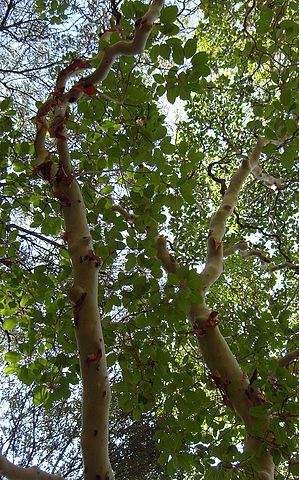 This group of plants includes more than 165 orders, about 540 families, 13 thousand genera and as many as 250 thousand species! Deciduous trees appeared on Earth more than 130 million years ago - later than all plants, but this did not prevent them from achieving dominance among these same plants, due to good adaptation to environment. Now on our planet it is very difficult to find a place in which there would be no representatives of broad-leaved. They are everywhere where, in principle, plant life is possible.
This group of plants includes more than 165 orders, about 540 families, 13 thousand genera and as many as 250 thousand species! Deciduous trees appeared on Earth more than 130 million years ago - later than all plants, but this did not prevent them from achieving dominance among these same plants, due to good adaptation to environment. Now on our planet it is very difficult to find a place in which there would be no representatives of broad-leaved. They are everywhere where, in principle, plant life is possible.
From time immemorial, deciduous trees have been revered by people, since they served as shelter from the sun and wind, were a sign of longevity, which deserved special respect. Some trees grow for several centuries and reach gigantic sizes.
In Russia grow and are considered the most valuable species: oak, beech, pear, cherry, walnut, maple, pink tree. In addition, people have learned to eat and use the fruits of some trees for medicinal purposes.
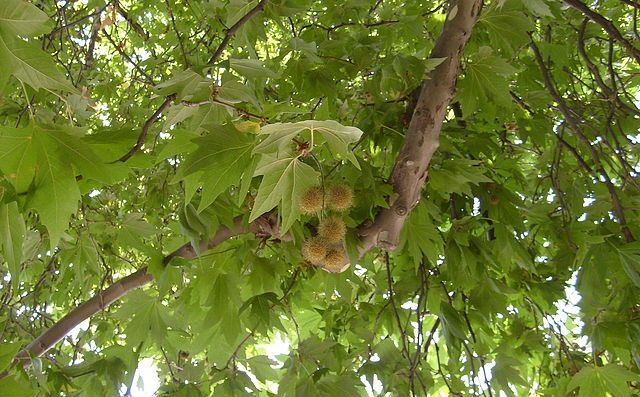 In addition to practical, broad-leaved trees and shrubs carry aesthetic value. These plants are widely used in landscape design. They are not as difficult to please with the soil as conifers, they are the least sensitive to transplantation and have a huge number of varieties, which allows the designer's imagination to combine thousands of colors and silhouettes. No wonder deciduous forests often served as a source of inspiration for painters and writers.
In addition to practical, broad-leaved trees and shrubs carry aesthetic value. These plants are widely used in landscape design. They are not as difficult to please with the soil as conifers, they are the least sensitive to transplantation and have a huge number of varieties, which allows the designer's imagination to combine thousands of colors and silhouettes. No wonder deciduous forests often served as a source of inspiration for painters and writers.
Like every living organism on Earth, they have their own age. In the bustle of the city, we do not often think about the lifespan of certain trees, and even more so, not everyone knows which tree lives for 1000 years or more. Our article will help answer these questions: who knows, maybe it is in your yard that a long-lived tree lives.
What is the life of trees?
The maximum age is largely determined by their species: the most short-lived are fruit trees, deciduous and are the basis of "evergreen forests". How long a plant will live also depends on the conditions in which it grows. 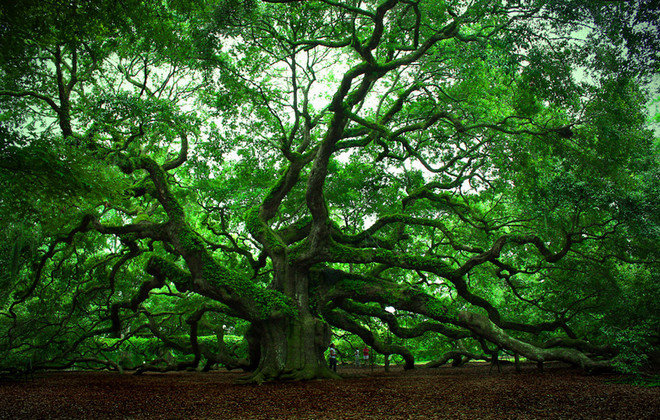 The mild climate contributes to the long existence of plants, and severe cold and winds quickly deplete even the most powerful plantings. For a long life expectancy, conscientious care plays an important role.
The mild climate contributes to the long existence of plants, and severe cold and winds quickly deplete even the most powerful plantings. For a long life expectancy, conscientious care plays an important role.
Cleaning from dry branches, processing from pests and top dressing significantly increase the chances of long life decorative trees.
Popular cultures
It is difficult to imagine familiar streets without green spaces. Almost all deciduous (summer green) species of oxygen "producers" are distributed in our strip. Walking around the city, you can count about 20 types of fruit, deciduous, and in some places, coniferous species. Consider the features of the growth of some of them.
Deciduous
- in its genus unites about 600 species of plants. The height of the oak reaches 50 meters, and any plant on the planet can envy how long the oak lives. It is easy to recognize an oak thanks to a wide leaf and fruits - acorns, which are widely used in medicine, cosmetology and cooking. Oak wood is highly valued in the manufacture of furniture, and red oak products are considered a sign of luxury.
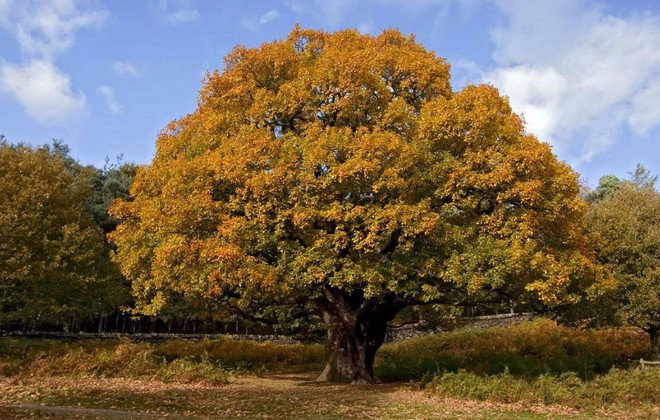
- The hornbeam grows throughout Europe, is found in Asia Minor and Transcaucasia. The wide crown of the hornbeam prefers to hide in shady broad-leaved forests and grows slowly, gaining up to 8 meters in width. The hornbeam is a representative of the birch family, and just like it, it blooms with earrings. The young leaves of the hornbeam are used as fodder for livestock, and oil is extracted from the fruits.
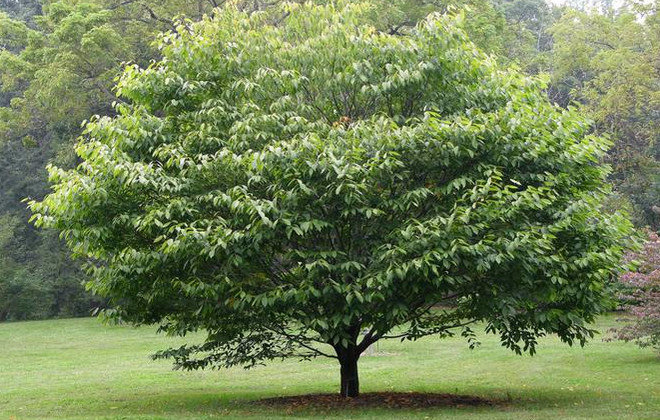
- has a branchy and spreading crown about 30 meters high, which speaks of the wealth that it can bestow on a person. After all, linden has many useful properties. The yellowish-white linden blossom is highly sought after in health and beauty treatments. Linden wood is easy to process, its soft fibers lend themselves well to carving.
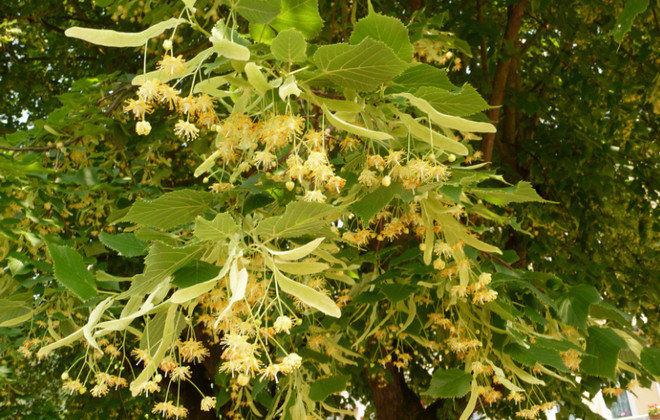 Did you know? Linden has been recognized as the national symbol of the Czech Republic since June 1848.
Did you know? Linden has been recognized as the national symbol of the Czech Republic since June 1848.
- Beech is widely represented in the forests of Europe. The smooth trunk of a beech reaches two meters in width and 30 meters in height. Beeches grow slowly but live long. Acorn-like fruits appear on the tree after 40-60 years of life. "Beech nuts" are edible and have properties that regulate metabolic processes and are responsible for the normal functioning of the heart.

- got its name due to its crown: spreading branches with a sparse leafy cover let in a lot of sunlight, so it is always light under the tree. In spring, ash takes on a purple hue and forms lionfish - fruits that fall off only in winter. The wood of 30-meter trunks is particularly durable, which is especially valuable in construction and facing works. In medicine, bark, leaves, ash fruits are used, and tree sap is also extracted. Despite medicinal properties, ash is considered a poisonous plant, therefore, without knowing the exact calculation of doses, it is better not to abuse decoctions. Ash is able to live up to 300 years, while the width of the trunk is rarely more than 1 meter.
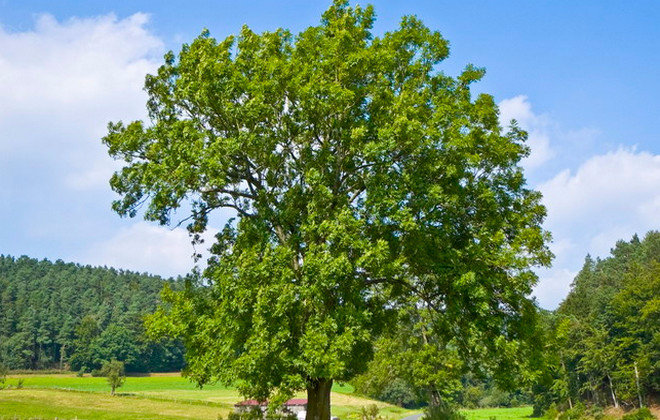
- usually reaches 40 meters, although some species grow in the form. The tree of a young elm is distinguished by a particularly smooth bark of the trunk, with age it coarsens and exfoliates. Elm leaves are large and oblong, lionfish fruits are visible on the tree at the 7-8th year of life. Elm is an unpretentious plant, it can be found both in a shady area, and in the middle of a plain or on a hilltop. Elm grows up to 300 years.
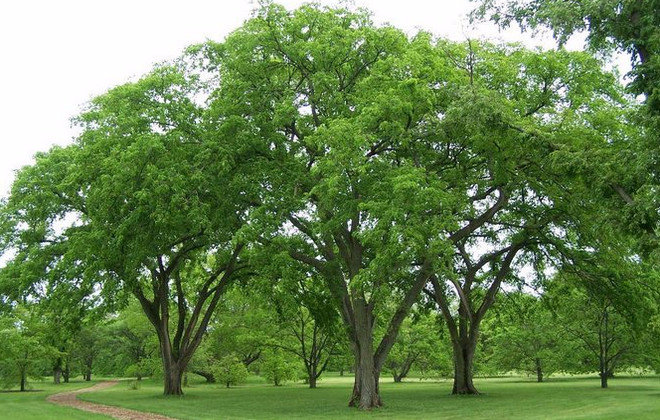
- Poplar - a plant with a columnar trunk up to 35 meters in height, has small rounded leaves. The fruit has the appearance of a box. From blossoming poplar buds, glue is collected, which is processed into. Poplar has the ability to absorb radiation and harmful substances, so you can often find poplar plantations in the areas of factories and various industries. Also, poplar fluff is an allergen. Unlike many other trees, poplar is a dioecious plant: the female does not have seeds in the flower, while the male does.
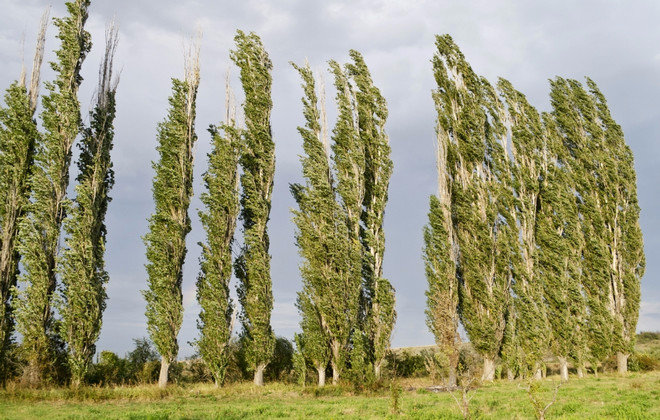 Important! When choosing a poplar for planting, consider the features: after flowering, only a female is able to spread "poplar fluff".
Important! When choosing a poplar for planting, consider the features: after flowering, only a female is able to spread "poplar fluff".
- Maple is especially noticeable in autumn: the leaves on different branches of the crown can acquire a different color. Plantations of maples are low and reach an average of 15-20 meters. The leaves have serrated lobes, which distinguishes the maple from many deciduous trees. Maple fruits are capable of spreading seeds over a long distance, since the two-winged fruit rotates when it falls and is picked up by the wind.
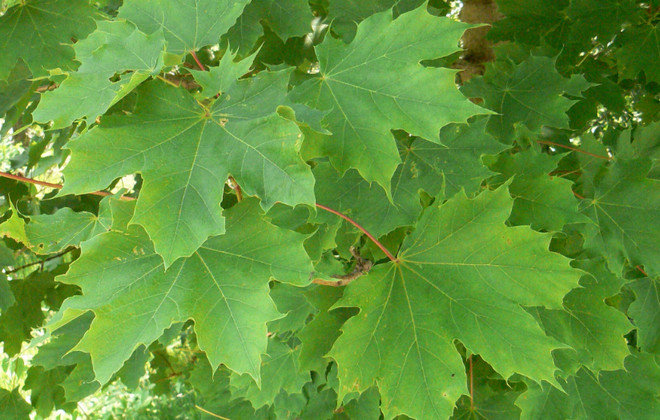
- The birch reaches 45 meters in height, and the trunk can reach 1.5 meters in girth. Birch also has dwarf subspecies. Birch acquires its usual color in the 8th year of life, before that its trunk is light brown and smooth. The leaves are shaped like a rounded triangle with serrated edges. It is impossible to say for sure how many years a birch lives, since there are many of its species: some grow up to 150 years, others can exist for 300 years.

- - a tree reaching 35 meters in height has lush crown. The age can reach 300 years. The leaves have the form of 7 petals located on the cuttings opposite each other. In May, the chestnut blossoms, its cone-shaped inflorescences have a pale pink or white color. Chestnut fruits ripen in autumn and are round boxes with spikes, inside of which there is a nut. It is where the seeds ripen. Medicines based on chestnut fruits have analgesic properties.
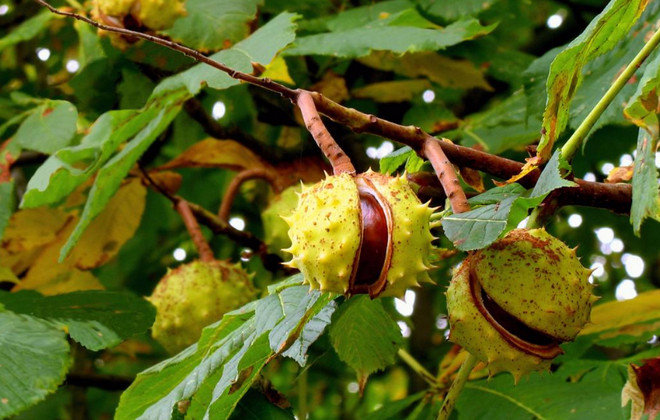
Among the popular deciduous crops, fruit trees cannot be ignored.
- in its genus has both wild and edible varieties. The tree grows up to a maximum of 15 meters in height, and some species form undersized shrubs. Any of the varieties needs care and certain conditions that must be created for the high fertility of the apple tree. There are heat-loving varieties and frost-resistant, moisture-loving and drought-tolerant. Choosing an apple tree is not difficult if you know the features of your site. This will ensure the longest life of your tree and a rich harvest.
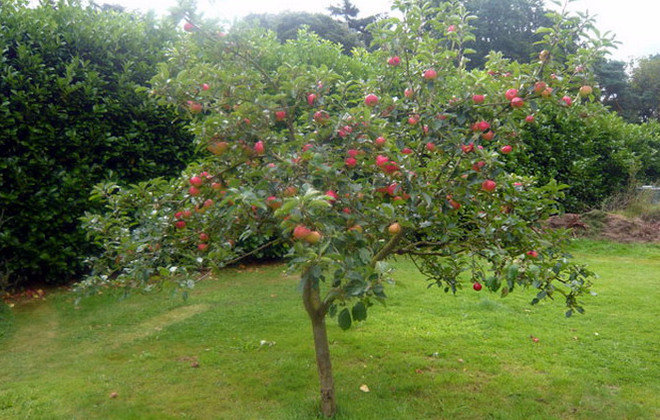
- today there are about 60 species and more than 3,000 varieties. Growing up to 20 meters, this tree is able to bear fruit up to 50 years. A pear, like an apple tree, does not grow well in places where groundwater is high. Therefore, if you want the pear to last as long as possible, choose a place on a hill to plant it. To prolong the life of your favorite plant, you need to feed it and treat it from pests.
 Did you know? The leaves on pears grow in a strictly defined order, being at an angle of 135 from each other.° . This allows you to get maximum moisture and sunlight.
Did you know? The leaves on pears grow in a strictly defined order, being at an angle of 135 from each other.° . This allows you to get maximum moisture and sunlight.
- differs in precociousness - already in the 3rd year of life it is able to produce a crop. Unlike pear and apple trees, plums love soil with high humidity, but at the same time, the place should not be ventilated. Caring for a plum is not much different from caring for other fruit plantations. If you want a long-lived plum on your site, loosen the ground near the trunk, destroy it, treat it from pests and apply top dressing that is suitable for the season.
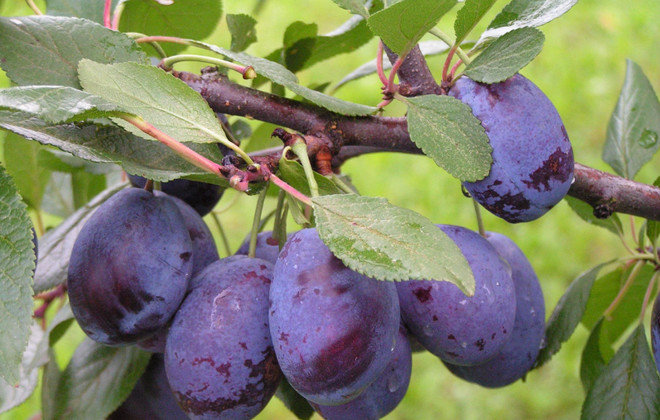
- Cherry does not grow above 10 meters, so if you want a compact fruit tree in your area, choose it. In the prime of its age, one tree is capable of producing about 20 kilograms of cherries from one tree. IN right conditions growing cherries can delight with their berries for 25 years.

- or bird cherry is the undeniable taste of summer. Unlike cherries, it has a larger and fleshy berry. It is also more whimsical, as it has special requirements for heat.
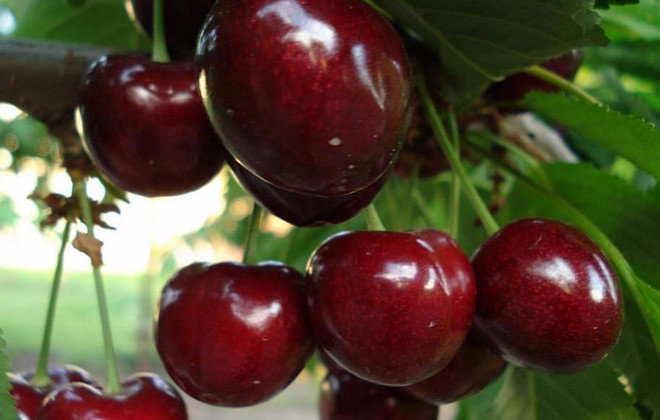
- also differs in average height and crown circumference. In a warm climate, apricot grows on average for 100 years and begins to bear fruit early, from 3-5 years. Most apricot cultivars are hardy, drought tolerant and can germinate in areas with minimal rainfall.
 Important! The difference between dried apricot fruits is that apricot-apricot dried right with the pit, and dried apricots- dried apricot, from which the stone has been removed.
Important! The difference between dried apricot fruits is that apricot-apricot dried right with the pit, and dried apricots- dried apricot, from which the stone has been removed.
Conifers
- - a symbol of the New Year, reaching a height of 50 meters. The conical shape of the crown has been formed over the years, since in the first years the spruce directs all its forces into growth. Depending on the species, the splendor of the branches and the length of the needles differ. Cones carry seeds in the 20th year of spruce growth. The green beauty can be found in different parts of the world, although there are species that are found in a certain area.

- Pine as a plant exists in three types:
- Tree.
- Bush.
- Stlanik.
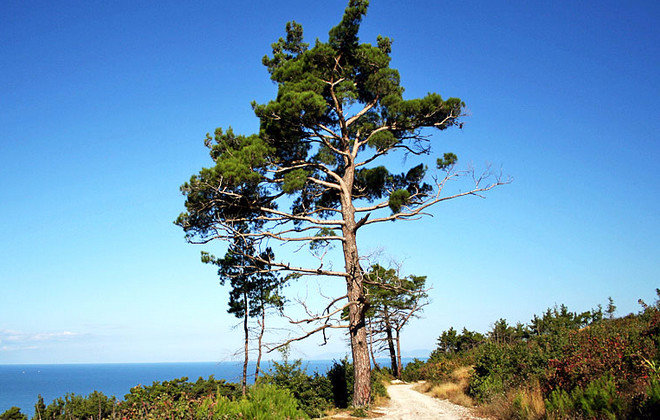
- - the tree is photophilous, resistant to drought, sudden changes in temperature, to. The longevity of juniper can be envied by anyone coniferous plant. The oils secreted by juniper heal the air and saturate it with phytoncides. Among the decorative coniferous plantations on the site, juniper is most often chosen because of its unpretentiousness to moisture and soil, which ensures its longevity.
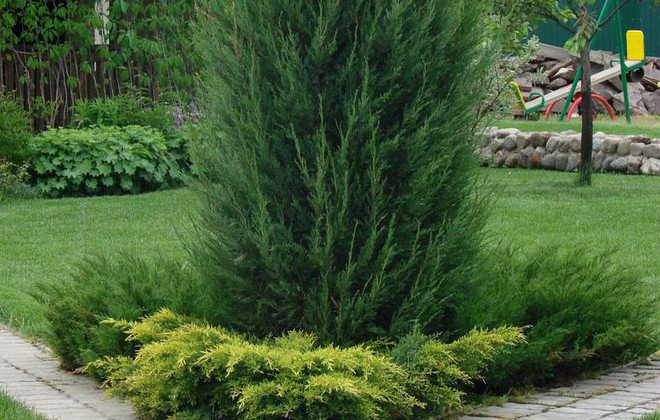 Important! The bactericidal properties of juniper needles are unparalleled.
Important! The bactericidal properties of juniper needles are unparalleled.
- can be easily recognized by vertically growing cones. The needles of the fir do not fall off even when the branches dry, which makes it evergreen. Average age fir - 150-200 years, but its height may vary depending on the species.
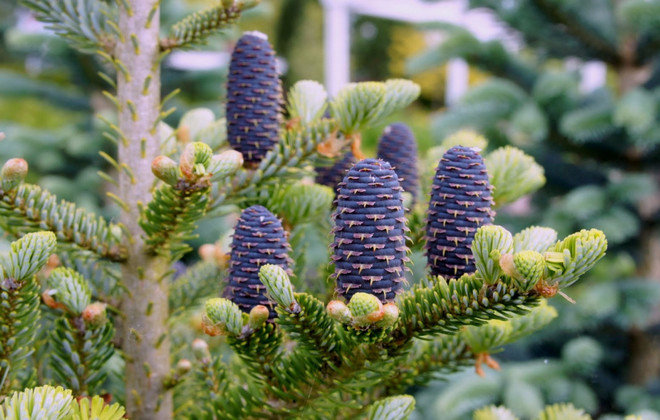
- - evergreen trees and shrubs that rarely grow above 11 meters. Tui are distinguished by soft, needle-like needles, which become darker and intertwined with age. Thuja is not capricious in care, it is cold-resistant, and certain species tolerate even frosty winters well.
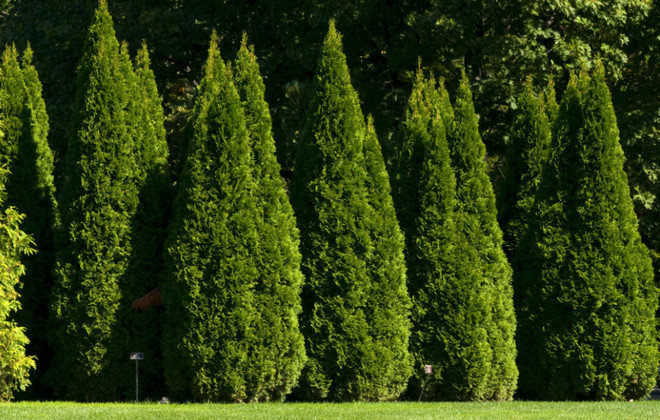
Life table
So how long do trees live, what is the maximum age of a maple, how long does an apricot exist and how many years does a pine live, this table will answer.
class="table-bordered">
Which tree lives 1000 years?
For some trees, the age of 1000 years is far from the limit. There are breeds that live over 1500 and 2000 years. If juniper can live up to 1000 years, then cedar pines, berry, oak, baobabs and sequoias have existed for over 3000 years. Did you know? Methuselah-the oldest person whose age is indicated in the Bible, famous for his longevity. He lived 969 years.
An example of a long-lived tree is a pine tree, which is already over 4850 years old! This pine tree grows in the White Mountains of California, in the National Wildlife Refuge, but the exact location of Methuselah is not disclosed to protect it from the public. Methuselah is recognized as the most ancient tree on planet Earth. 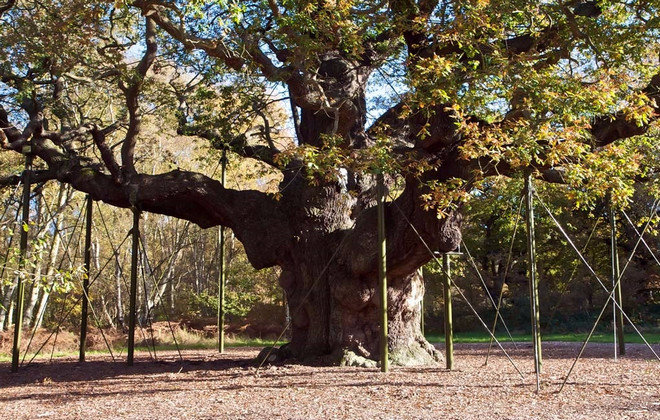 No matter how much a tree is given on earth, it is worth remembering that from the moment of germination to the very felling or wilting, plants perform the most important function - they enrich the planet with oxygen. The life expectancy of green spaces largely depends on the people themselves: it must be remembered that breaking a tree is a second, and growing it takes years.
No matter how much a tree is given on earth, it is worth remembering that from the moment of germination to the very felling or wilting, plants perform the most important function - they enrich the planet with oxygen. The life expectancy of green spaces largely depends on the people themselves: it must be remembered that breaking a tree is a second, and growing it takes years.
Was this article helpful?
Not really


